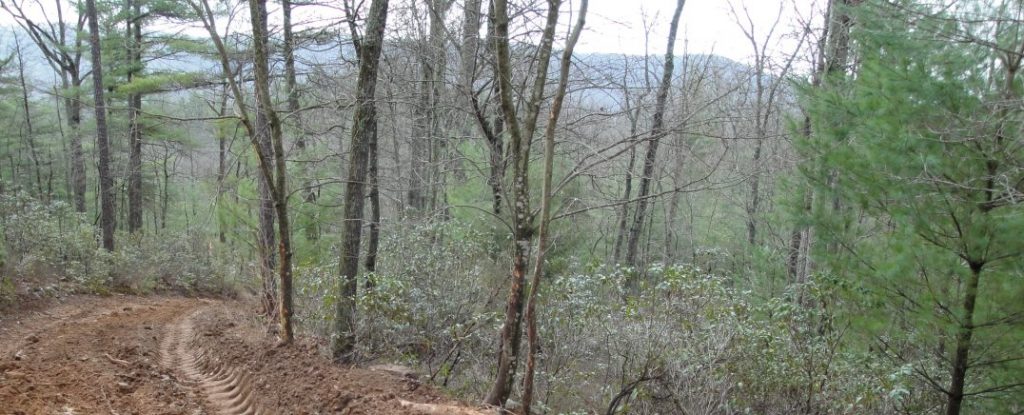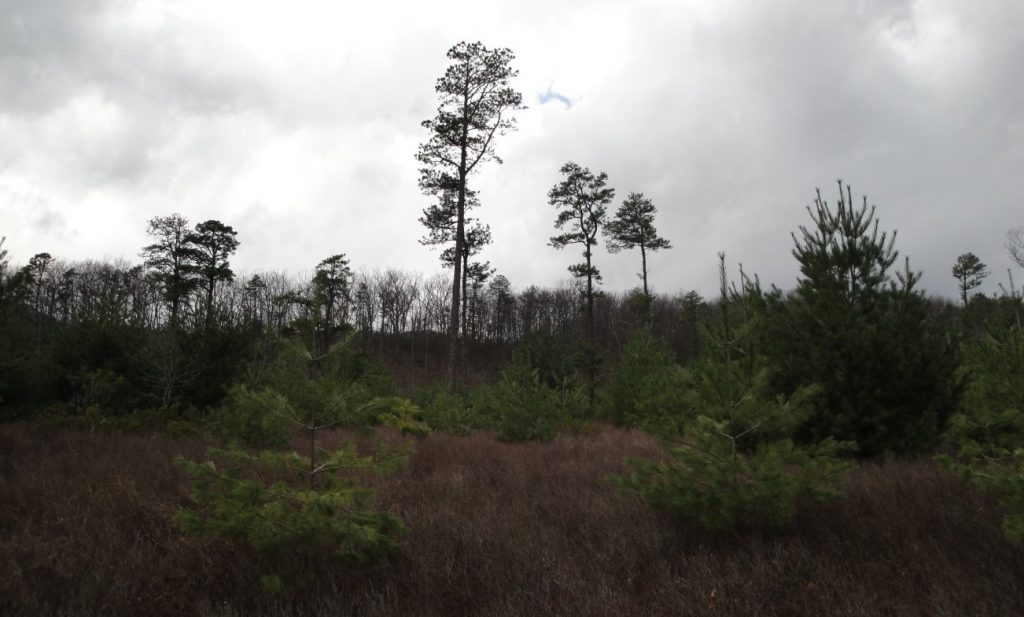
I drove with Frank Sherwood to the Virginia tree farm of the year and got a chance to talk to him as we walked around on the ground. Frank has been doing forestry in Virginia for thirty-five years and I got some good information on drive down from Winchester.
This area of Virginia features a lot of mixed hardwoods and white pines. I was very familiar with white pines form Wisconsin, but I really had a lot to learn about them. For example, white pine wood is light and not as hard or strong as loblolly. It is good for fence rails (it doesn’t twist) and it is used in log cabins, but it is not as much use as structural timber. Frank lamented that there is not much of a market for white pine saw timber in the immediate area, besides in those two limited uses. A lot of the local white pine had not grown straight and un-branched. The newer plantations are doing better.

White pines have not been developed genetically as well as loblolly and it is less likely to be planted, since natural regeneration works very well. A white pine rotation is around fifty years (15-18 years longer than loblolly) with two possible thinning.
Pulp prices have remained steady over the years, Frank told me. Some people are a little concerned about biofuels, which would compete with pulp and drive the prices up (good for landowners), but there currently is not a biofuels market in the Winchester region. You can make ethanol from cellulous, but it is not worth it with today’s technologies. That means that effective biofuels for wood is to burn it directly and for that you need local facilities that burn it. The alternative is to make wood pellets, but that industry is also not present locally.
Landowners have a couple options for timber selling. The one you get the most money for is saw timber. Saw timber will yield $150-400 per 1000 board feet. Pulp is the cheapest, maybe biofuels in the near future. Pulp yields $5-7 a ton for pine and $2-3 for hardwood. In between is scragwood. These are small diameter but straight trees that can be sawed into rough boards used in crates and pallets.
Frank feeds the mill in Luke, Maryland. He says that the mill’s catchment area is getting bigger because it is harder to find wood in local areas. Development and forest fragmentation are the causes. You can do forestry on small tracts, but at some point it gets to be economically unviable. You probably need around forty acres to do decent management. Development has been taking forestry out of business. Although the recent economic downturn has stopped much of it, development will resume when the good times roll again. Too bad.
Frank doesn’t know of anybody using biosolids or animal manure on forest lands in this part of the Shenandoah valley or around. There are several chicken operations (we drove past a Perdue operation) that produce a fair amount of chickenshit, but Frank didn’t know what they did with it. Chickenshit is a powerful fertilizer, high in potassium, but as I understand it, chickenshit has to be left to decompose a little otherwise it can burn out the crops. IMO forest lands would be a good place to dispose of some of these farm wastes. There is a lot of forest and they could absorb and use the nitrogen and phosphate w/o letting it slip into the Chesapeake Bay. Of course, the problem is transportation. Manure is bulky, heavy and stinky.
The problem is concentration. These large animal operations concentrate the crap. That changes it from a valuable fertilizer into a potential pollution problem. The difference between a life-giving medicine and a deadly poison is often the dosage.
Anyway, those are some of the things I learned from Frank. The biggest benefit of writing the tree farm of the year article is getting to talk to people like him while actually setting foot on the forests.
